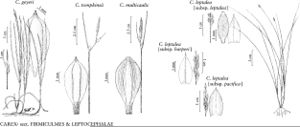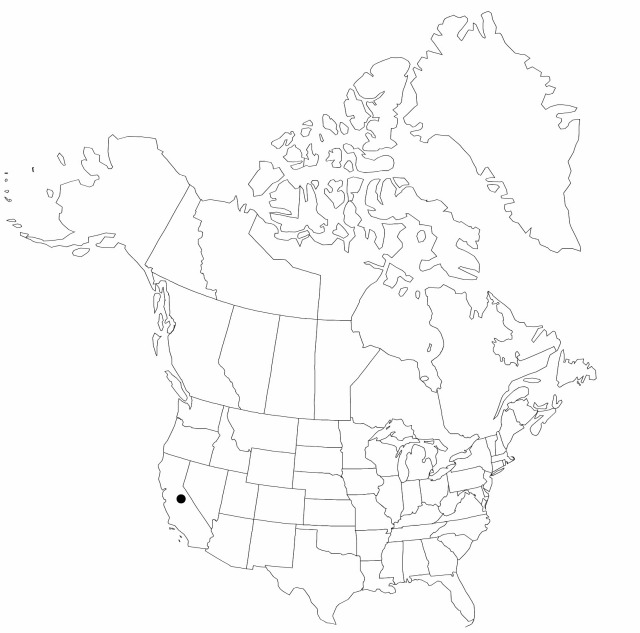Carex tompkinsii
Leafl. W. Bot. 9: 185. 1961.
Plants not cespitose; short-rhizomatous. Culms 10–40 cm, triangular, scabrous distally Leaves plane, 1.5–3 mm wide, equaling culms. Spike with staminate portion separated from pistillate portion by short but conspicuous internode, with pistillate portion 0–2 branched, 5–23 × 1.3–2.3 mm. Pistillate scales green, proximal foliaceous, long-awned. Staminate scales green to pale-brown, apex obtuse to acute. Anthers 1.9–3 mm. Perigynia 1–5, light green to brownish green, with 2 strong marginal veins, otherwise veinless, 5–6 × 2.5–3 mm.
Phenology: Fruiting late May–late Jun.
Habitat: Dry, open or partly shaded, rocky canyon slopes
Elevation: 1000–1700 m
Discussion
Of conservation concern.
Carex tompkinsii is known to occur only in Fresno County, California. Specific status may not be warranted for this taxon; until a thorough review of its taxonomy has been completed, it seems best to maintain its rank to bring it to the attention of field botanists.
Selected References
None.
Lower Taxa
"shortened" is not a number.

